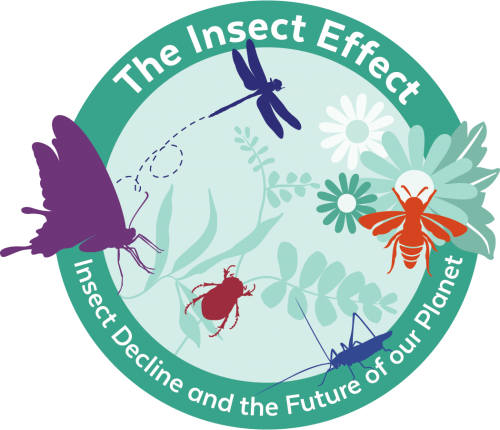Little Known Facts About Eco Bed Bug Exterminators Dc.
Table of ContentsThe Main Principles Of Eco Bed Bug Exterminators Dc Some Known Incorrect Statements About Eco Bed Bug Exterminators Dc Everything about Eco Bed Bug Exterminators DcThe 4-Minute Rule for Eco Bed Bug Exterminators DcNot known Facts About Eco Bed Bug Exterminators Dc
Because pesticides are hazardous, they are also potentially harmful to humans, pets, other organisms, and the setting. People that utilize pesticides or frequently come in contact with them have to understand the family member poisoning, possible wellness results, and preventative procedures to reduce direct exposure to the products they utilize. Risk, or risk, of utilizing pesticides is the possibility for injury, or the degree of risk involved in utilizing a pesticide under an offered set of conditions.
Nonetheless, applicators can decrease or virtually remove direct exposure-- and hence lower risk-- by following the label instructions, making use of individual protective clothes and tools (PPE), and managing the chemical appropriately. As an example, greater than 95 percent of all chemical direct exposures originate from dermal exposure, primarily to the hands and lower arms. By wearing a pair of unlined, chemical-resistant handwear covers, this sort of exposure can be virtually eliminated.
The harmful results that take place from a single direct exposure by any path of access are described "acute effects." The 4 routes of exposure are dermal (skin), breathing (lungs), dental (mouth), and the eyes. Severe poisoning is identified by analyzing the dermal toxicity, inhalation toxicity, and oral toxicity of guinea pig.
The Main Principles Of Eco Bed Bug Exterminators Dc
Acute toxicity is measured as the amount or concentration of a toxicant-- the a.i.-- needed to kill half of the pets in an examination populace. This step is usually revealed as the LD50 (deadly dose 50) or the LC50 (deadly focus 50). In addition, the LD50 and LC50 values are based upon a single dose and are taped in milligrams of pesticide per kilo of body weight (mg/kg) of the examination pet or partly per million (ppm).
The lower the LD50 or LC50 worth of a pesticide item, the greater its toxicity to human beings and animals. Pesticides with a high LD50 are the least hazardous to humans if made use of according to the instructions on the product tag. The chronic poisoning of a chemical is established by subjecting test pets to long-term direct exposure to the active ingredient.
The chronic toxicity of a pesticide is harder than acute toxicity to establish via laboratory analysis. Products are categorized on the basis of their relative acute poisoning (their LD50 or LC50 worths). Chemicals that are categorized as very poisonous (Toxicity Group I) on the basis of either oral, dermal, or inhalation toxicity need to have the signal words threat and poisonous substance published in red with a head and crossbones sign plainly displayed on the front panel of the bundle tag.
The intense (solitary dose) oral LD50 for chemical items in this group varies from a trace amount to 50 mg/kg. As an example, direct exposure of a few decreases of a product taken by mouth could be fatal to a 150-pound individual. Some chemical products have just the signal word risk, which informs you nothing about the intense toxicity, just that the item can cause severe eye damages or severe skin irritability
Eco Bed Bug Exterminators Dc - The Facts
In this category, the intense oral LD50 arrays from 50 to 500 mg/kg. A tsp to an ounce of this material can be deadly to a 150-pound person (pest control Washington DC). Chemical products categorized as either slightly poisonous or reasonably safe (Toxicity Groups III and IV) are needed to have the signal word CAUTION on the chemical label

All pesticide toxicity chemical, worths the LD50, can be found on located product's Item Safety Data Security InformationMSDS). Pesticide tags and MSDS can be acquired from stores or makes - https://hub.docker.com/u/ecobedbug3xt. The signs and symptoms of chemical poisoning can range from a light skin irritability to coma or also fatality.
People additionally differ in their level of sensitivity to various levels of these chemicals. Some people might show no reaction to an exposure that might trigger serious disease in others (bed bug heat treatment). Since of prospective health and wellness concerns, pesticide individuals and trainers have to acknowledge the usual indications and signs of chemical poisoning. The effects, or signs and symptoms, of pesticide poisoning can be broadly specified as either topical or systemic.
The Best Guide To Eco Bed Bug Exterminators Dc
Dermatitis, or inflammation of the skin, is approved as the most commonly reported topical effect associated with pesticide direct exposure. Some individuals often tend to i thought about this cough, hiss, or sneeze when subjected to pesticide sprays.
This symptom generally subsides within a couple of minutes after a person is gotten rid of from the direct exposure to the irritant. Nonetheless, a response to a pesticide item that triggers a person not just to sneeze and cough however also to develop severe intense breathing signs is a lot more most likely to be a true hypersensitivity or allergy.
Systemic impacts are fairly various from topical effects. They frequently occur away from the initial point of call as a result of the chemical being absorbed right into and distributed throughout the body. Systemic effects often consist of nausea, throwing up, tiredness, migraine, and digestive tract problems. In innovative poisoning instances, the person may experience modifications in heart rate, problem breathing, convulsions, and coma, which could cause fatality.